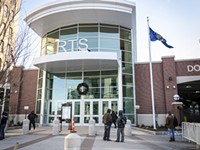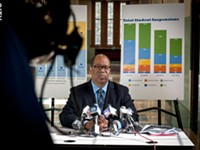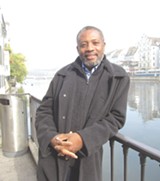[
{
"name": "500x250 Ad",
"insertPoint": "5",
"component": "15667920",
"parentWrapperClass": "",
"requiredCountToDisplay": "1"
}
]
When Norman Garrick looks at cities that declined during the latter half of the 20th century, he says that he's seldom surprised to find that transportation issues are often an overlooked root cause.
"I think a lot of what happened to the Rust Belt cities and some of the cities in the Northeast have been what I would call self-inflicted wounds," says Garrick, associate professor at the University of Connecticut. "Those wounds are very related to transportation."
Garrick will speak at Gleason Works, 1000 University Avenue, on Wednesday, June 3. His lecture, "Transit Revolution," is sponsored by the Rochester Regional Community Design Center. For tickets: www.rrcdc.org.
Garrick's research has focused on how city leaders in the US treat transportation. Cars and the entire infrastructure to accommodate them are not the dominate feature in prosperous urban environments, he says.
Many officials have tried to address economic growth with a narrow, outdated view of transportation, Garrick says.
"Transportation engineers have convinced people that the only thing that really matters is to look at how congested a place is, and how to relieve that congestion," Garrick says.
That has historically led to building more highways, parking lots, and garages, he says, in the hope of attracting more people to downtown areas.
But the result has frequently been the opposite, Garrick says. Instead of bringing more people downtown and boosting economic growth, he says, people have been displaced by cars.
"People don't want to be in an environment like this," Garrick says.
Rochesterians need to develop a clear picture of what they want the city to be 20 years from now, he says, paying particular attention to a transit system that moves beyond the automobile.
"What I'm trying to get across is that cities like Rochester need a vision," he says. "Bigger roads, bigger highways, and more parking lots have been a disaster."
Garrick recommends that Rochesterians take their cues from cities such as Berkeley, Cambridge, and especially Zurich, which Garrick says has one of the best transit systems in the world.
Citizen groups in these cities played an important role in developing new transit systems, he says, starting with limiting reliance on cars.
"A city Rochester's size could easily depend more on walking, biking, and public transit," he says. "Rochester will look much more like a vibrant city." Over time, the city would look less bombed-out from parking lots, vacant lots, and garages, he says.
But re-envisioning transportation goes beyond individual mobility, Garrick says. The cost of cars, insurance, maintenance, and fuel; where we work and the jobs we want; the number of people killed on highways; and the cost of health care for a sedentary society are all factors of transportation, Garrick says.
"When you look at all those different measures, you find that places where people are more car-dependent pay for that dependence in a lot of different ways," he says.
Speaking of...
-

No cash? No problem soon for RTS bus riders
Jan 14, 2020 -

Organizations join together in pursuit of a multimodal community
Dec 3, 2019 -

Board accepts transit redesign plan
Jun 27, 2019 - More »
Latest in News
More by Tim Louis Macaluso
-

RCSD financial crisis builds
Sep 23, 2019 -

RCSD facing spending concerns
Sep 20, 2019 -

Education forum tomorrow night for downtown residents
Sep 17, 2019 - More »






